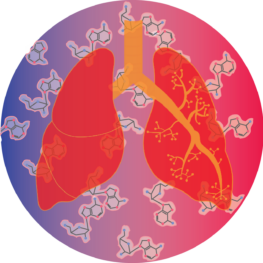“Securing SPARK funding and learning how to communicate science to a lay audience has given me the confidence to believe in myself and my science, and connect with people who are looking for an opportunity to help make research possible.
I have learned how to manage a small project, train and mentor project assistants, and even provided high school students with the opportunity to learn about sex biases in immunology. I believe my SPARK project has ignited years worth of research that may not have otherwise been explored.”
What if we could uncover the biological mechanism that makes men more vulnerable to COVID-19?
Funded: January 2022
Funded By: The generosity of Bill Passey and Maria Silva and 2021 Various Donors
What was the goal of your SPARK project?
I set out to discover why men are more vulnerable to COVID infectivity. We have so far found that men tend to have increased adenosine deaminase (ADA) activity in their serum. Previous studies in the Sharma lab have shown that increased ADA activity can suppress the expression of Interferon Beta (IFNβ), a key antiviral cytokine important in early elimination of COVID infectivity. Thus, I hypothesized in this study that increased ADA activity in men could contribute to their increased vulnerability to COVID. To test this hypothesis, I employed the use of several in vitro, in vivo, and bioinformatic approaches.
Did you face any challenges?
I was initially interested in validating our preliminary results in mice. But due to some technical difficulties (a long timeline for biosafety lab training), I decided to utilize this study to further strengthen our hypothesis using data from human patient groups. This shift actually allowed us to uncover further key possible regulars of ADA2 activity in men and formulate a working hypothesis, which we are now testing using human bronchoalveolar epithelial cells.
SPARK project results:
To better understand vulnerability to SARS-CoV-2, we wondered if measuring molecular players called Endogenous Retroviral elements (ERVs) could be used as a proxy for measuring ADA activity in the blood and tissues in humans. Using several publicly available data sets, we analyzed sexual dimorphism of ERV expression in blood and serum samples. Interestingly, we observed a significant increase in ERV expression in the lung tissue of females, compared with males, from the same cohort. Given that immune cells called monocytes and macrophages are the major contributors on ADA activity in the serum, we hypothesize that in the lungs, where monocytes can become long-living differentiated macrophages, the increased ADA activity could contribute to the decreased ERV expression in men, thus subjecting them to lowered tissue IFNβ during acute infections.
Recent research has identified that epithelial cells of the upper and lower respiratory system distal lung are primary targets of COVID infectivity. To understand how this decreased ERV expression and increased ADA activity in the lungs can contribute to lowered IFNβ response in men, I collaborated with Dr. Ian Mathews (‘18 SPARK winner) and the Hedrick Lab to mine publicly available data from COVID patients. We analyzed bronchoalveolar lavage fluid and sputum samples for COVID infectivity, ADA activity and ERV expression, and also IFNβ and other cytokine expression. We identified a strong sex-bias associated with the expression of IFN stimulatory genes. This discovery suggests females are better poised to have a strong IFN response to COVID infection, compared with their male counterparts.
What’s next for this project?
My SPARK award allowed this research to come much farther than I expected, and we are now on the way to publishing the results of this study in a reputable journal. I also hope to apply for NIH funding to continue this work.
In the meantime, we are taking steps to identify key immune cell populations that express ADA, and learn how these levels may change during COVID infection between males and females. To further validate the effect of ADA expression on COVID infectivity, we will be treating primary Bronchial Epithelial cells with exogenous ADA in vitro and watching for changes to IFNβ expression.
Our next goal is to identify how this translates to levels of IFNβ at the tissue level, which we believe is one step closer to identifying why men are more vulnerable to not only COVID, but to several other respiratory tract Infections such as influenza, pneumococcal disease, and the common cold.
What’s next for Priyanka?
I see myself as a mentor and a project leader, either in industry or an academic setting.
